Stat5 opposes the transcription factor Tox and rewires exhausted CD8+ T cells toward durable effector-like states during chronic antigen exposure
- PMID: 38091951
- PMCID: PMC10752292
- DOI: 10.1016/j.immuni.2023.11.005
Stat5 opposes the transcription factor Tox and rewires exhausted CD8+ T cells toward durable effector-like states during chronic antigen exposure
Abstract
Rewiring exhausted CD8+ T (Tex) cells toward functional states remains a therapeutic challenge. Tex cells are epigenetically programmed by the transcription factor Tox. However, epigenetic remodeling occurs as Tex cells transition from progenitor (Texprog) to intermediate (Texint) and terminal (Texterm) subsets, suggesting development flexibility. We examined epigenetic transitions between Tex cell subsets and revealed a reciprocally antagonistic circuit between Stat5a and Tox. Stat5 directed Texint cell formation and re-instigated partial effector biology during this Texprog-to-Texint cell transition. Constitutive Stat5a activity antagonized Tox and rewired CD8+ T cells from exhaustion to a durable effector and/or natural killer (NK)-like state with superior anti-tumor potential. Temporal induction of Stat5 activity in Tex cells using an orthogonal IL-2:IL2Rβ-pair fostered Texint cell accumulation, particularly upon PD-L1 blockade. Re-engaging Stat5 also partially reprogrammed the epigenetic landscape of exhaustion and restored polyfunctionality. These data highlight therapeutic opportunities of manipulating the IL-2-Stat5 axis to rewire Tex cells toward more durably protective states.
Keywords: CD8(+) T cell; IL-2; PD-1 blockade; Stat5; Tex intermediate; Tox; epigenetic reprogramming; exhaustion; orthogonal IL-2:IL2Rβ.
Copyright © 2023 Elsevier Inc. All rights reserved.
Conflict of interest statement
Declaration of interests A.C.H. performed consulting work for Immunai and receives research funding from B.M.S and Merck. K.C.G. is the founder of Synthekine. E.J.W. is a member of the Parker Institute for Cancer Immunotherapy, which supported the study. E.J.W. is an advisor for Coherus, Danger Bio, Marengo, Janssen, NewLimit, Pluto Immunotherapeutics, Related Sciences, Santa Ana Bio, Synthekine. E.J.W. is a founder of Arsenal Biosciences.
Figures

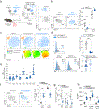
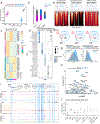
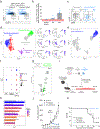
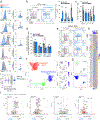
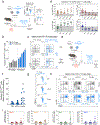
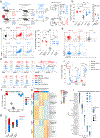
Comment in
-
Stat5a sobers up inTOXicated T cells.Immunity. 2023 Dec 12;56(12):2670-2672. doi: 10.1016/j.immuni.2023.11.013. Immunity. 2023. PMID: 38091945
References
Publication types
MeSH terms
Substances
Grants and funding
- P01 CA210944/CA/NCI NIH HHS/United States
- R35 CA263922/CA/NCI NIH HHS/United States
- U19 AI117950/AI/NIAID NIH HHS/United States
- P50 CA261608/CA/NCI NIH HHS/United States
- R01 AI155577/AI/NIAID NIH HHS/United States
- K08 CA230157/CA/NCI NIH HHS/United States
- U19 AI082630/AI/NIAID NIH HHS/United States
- P50 CA174523/CA/NCI NIH HHS/United States
- R01 AI115712/AI/NIAID NIH HHS/United States
- R01 CA273018/CA/NCI NIH HHS/United States
- P30 CA016520/CA/NCI NIH HHS/United States
- R01 AI051321/AI/NIAID NIH HHS/United States
- P01 AI108545/AI/NIAID NIH HHS/United States
- HHMI/Howard Hughes Medical Institute/United States
LinkOut - more resources
Full Text Sources
Molecular Biology Databases
Research Materials
Miscellaneous

